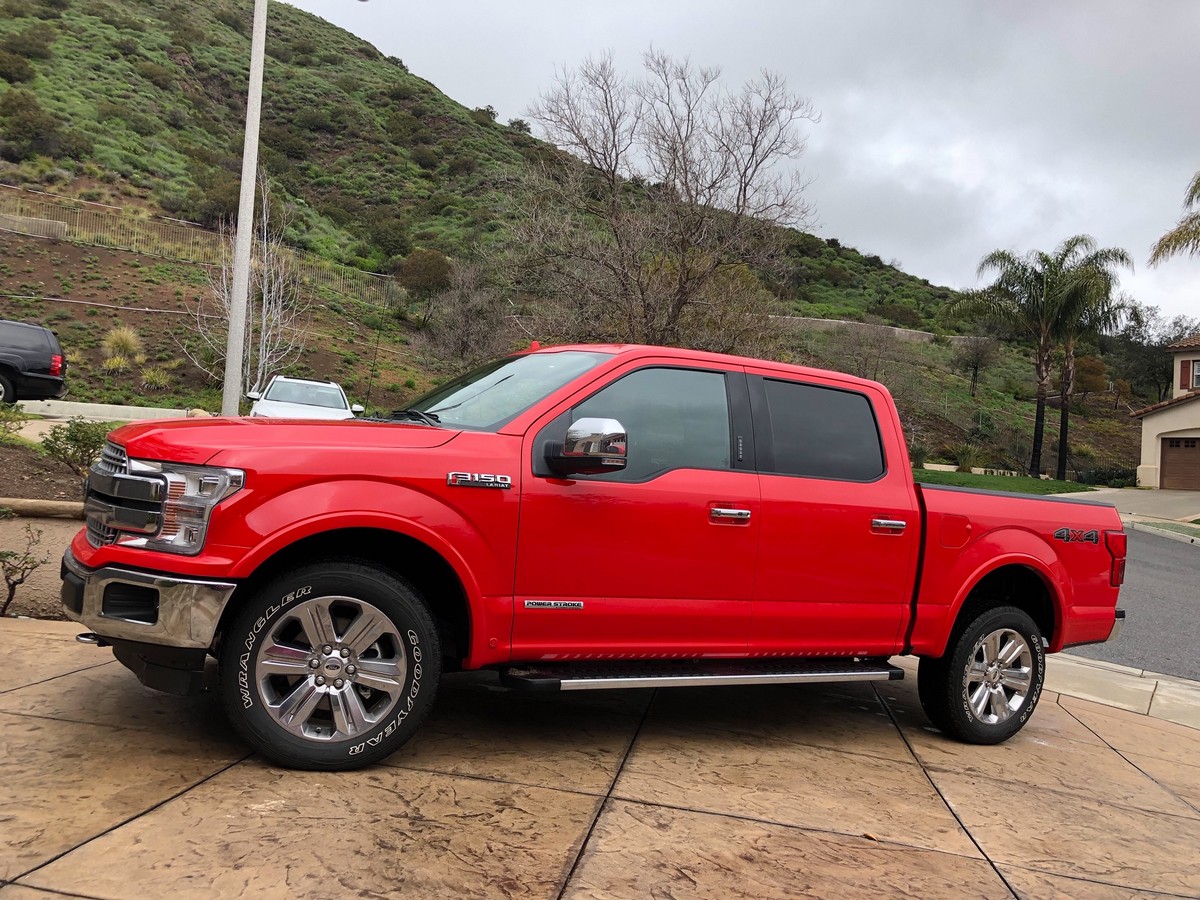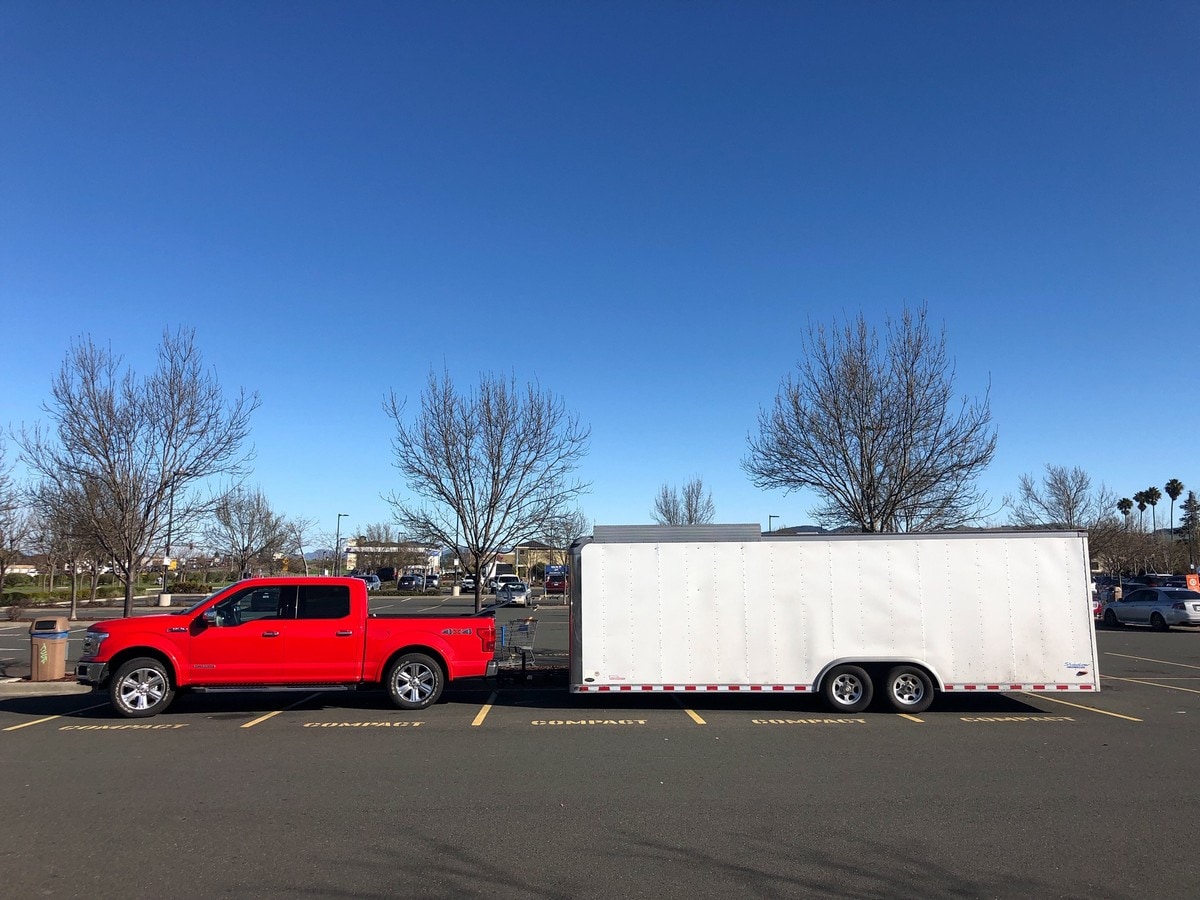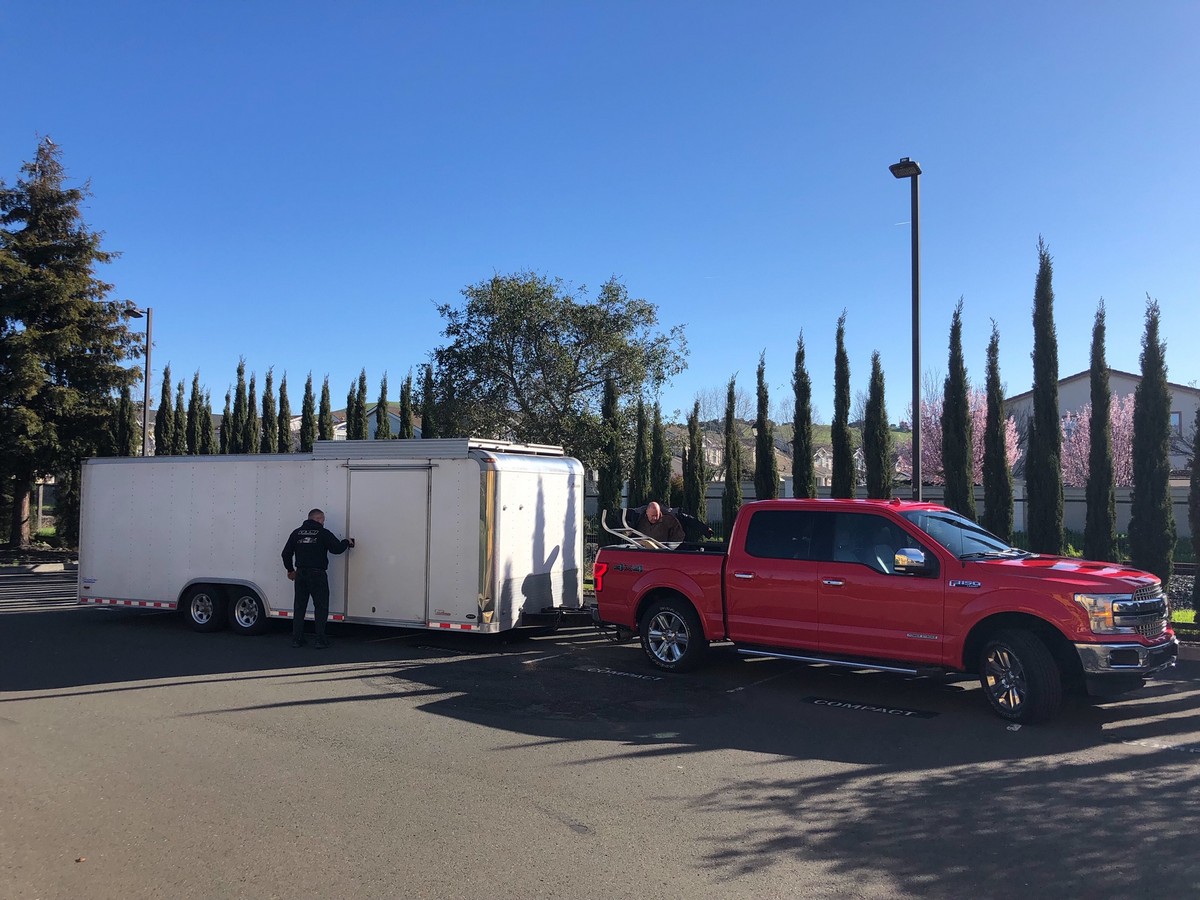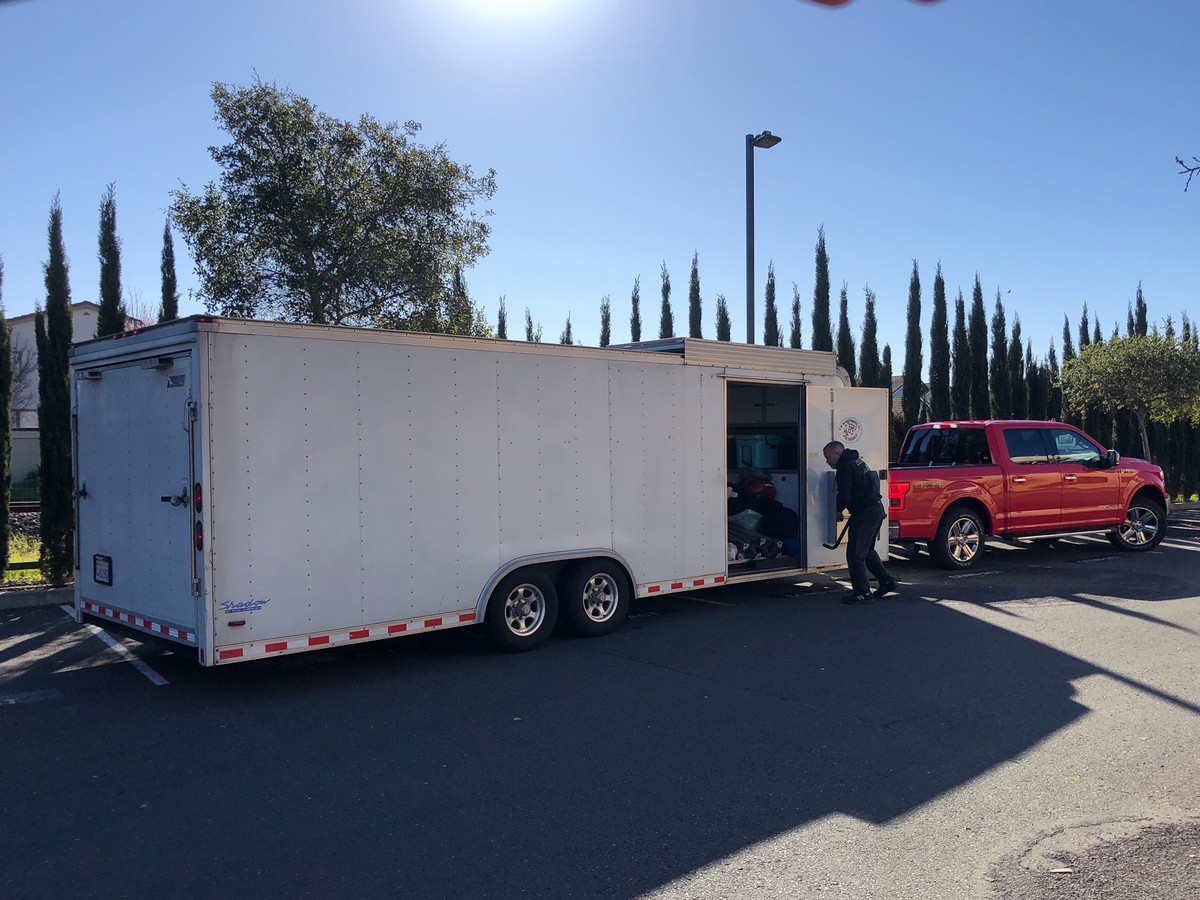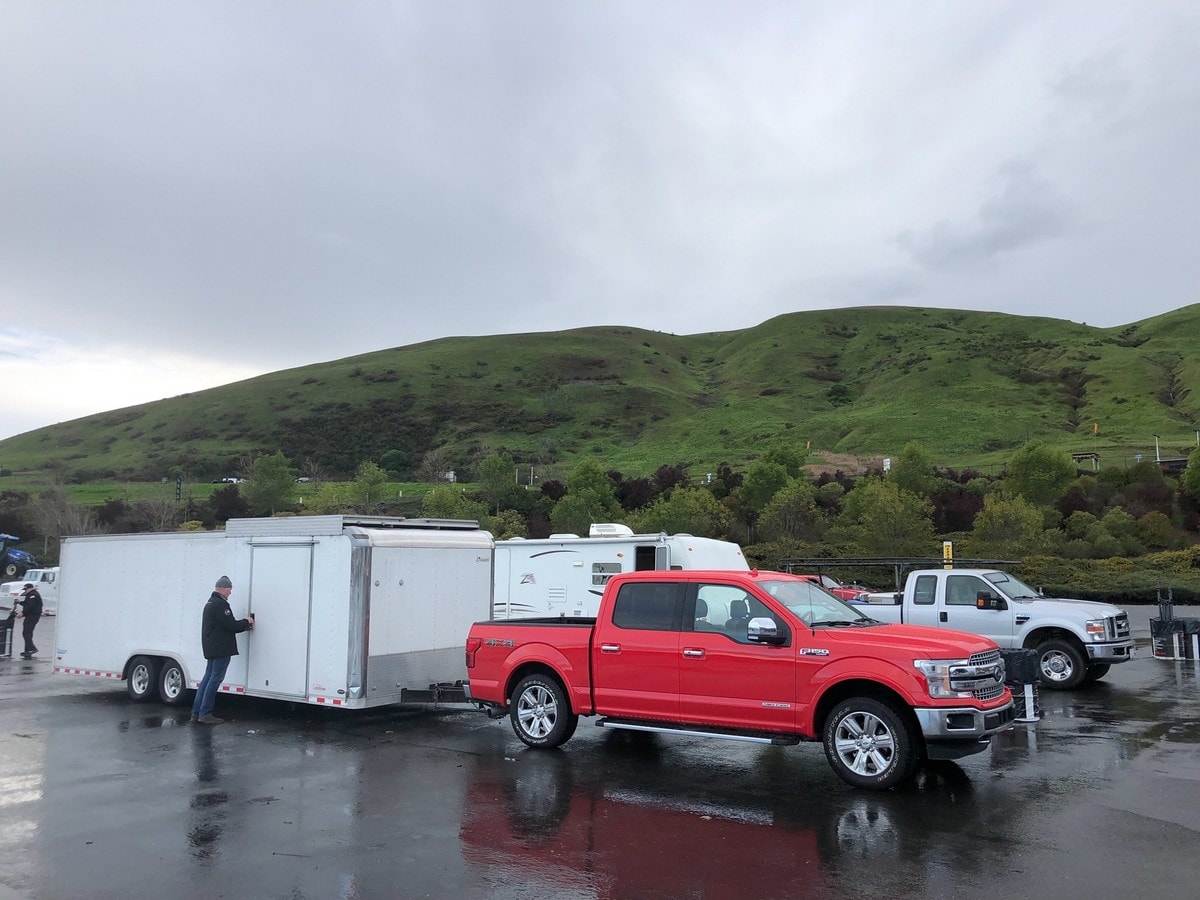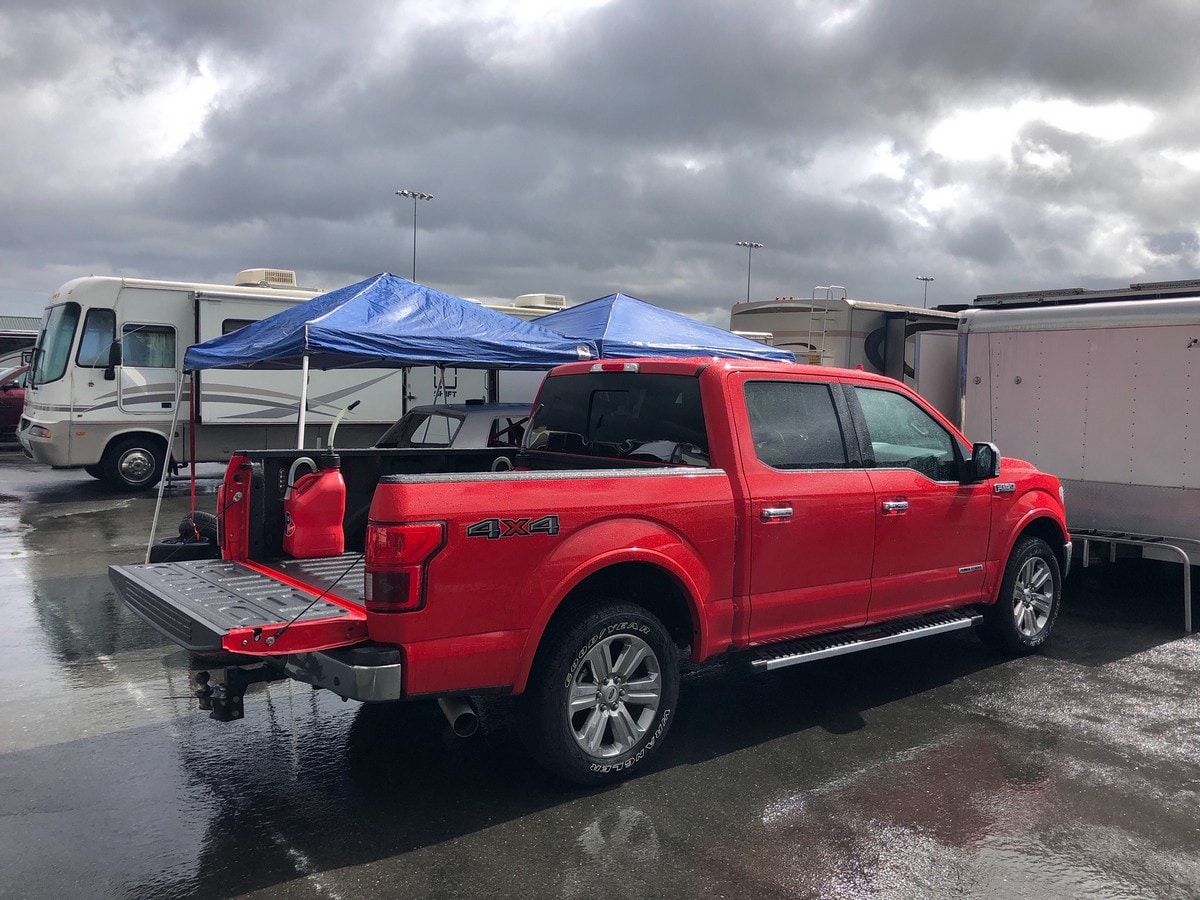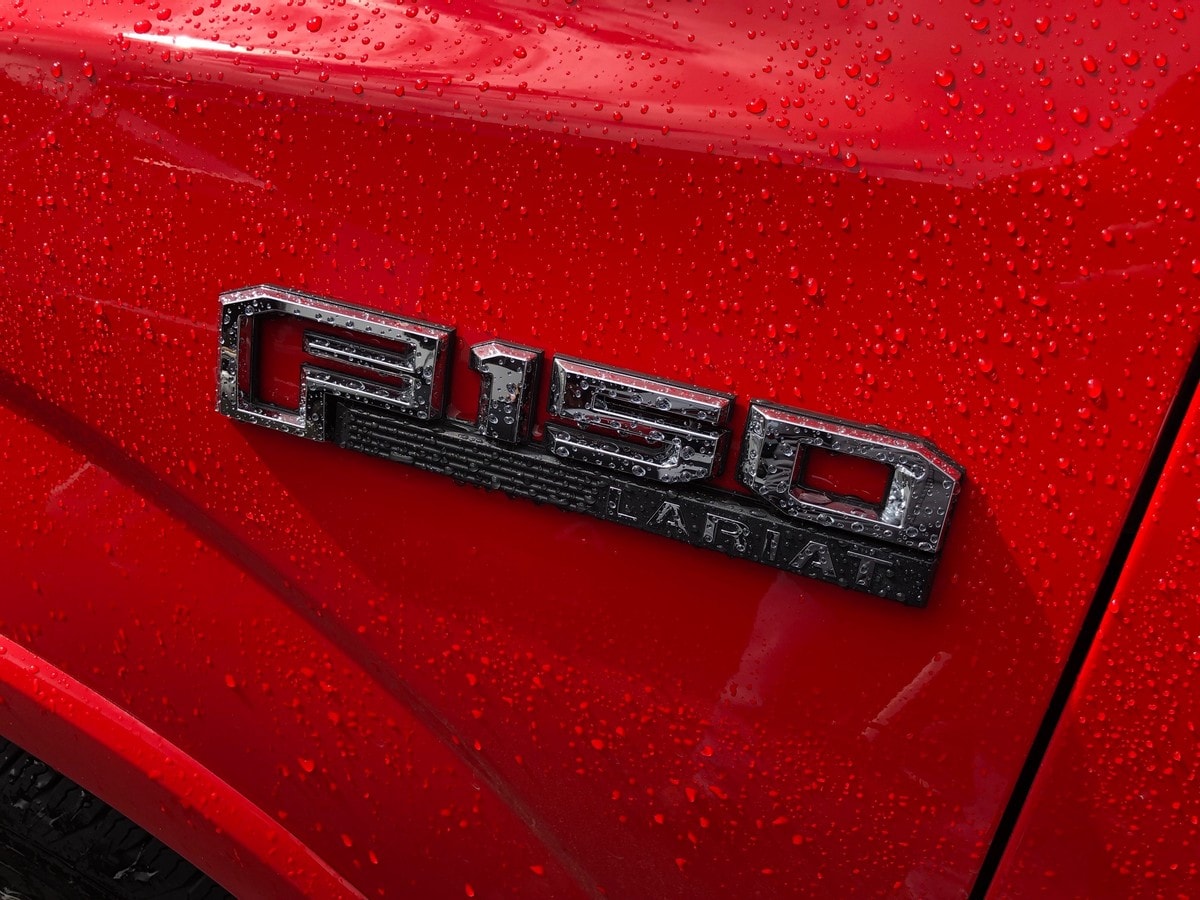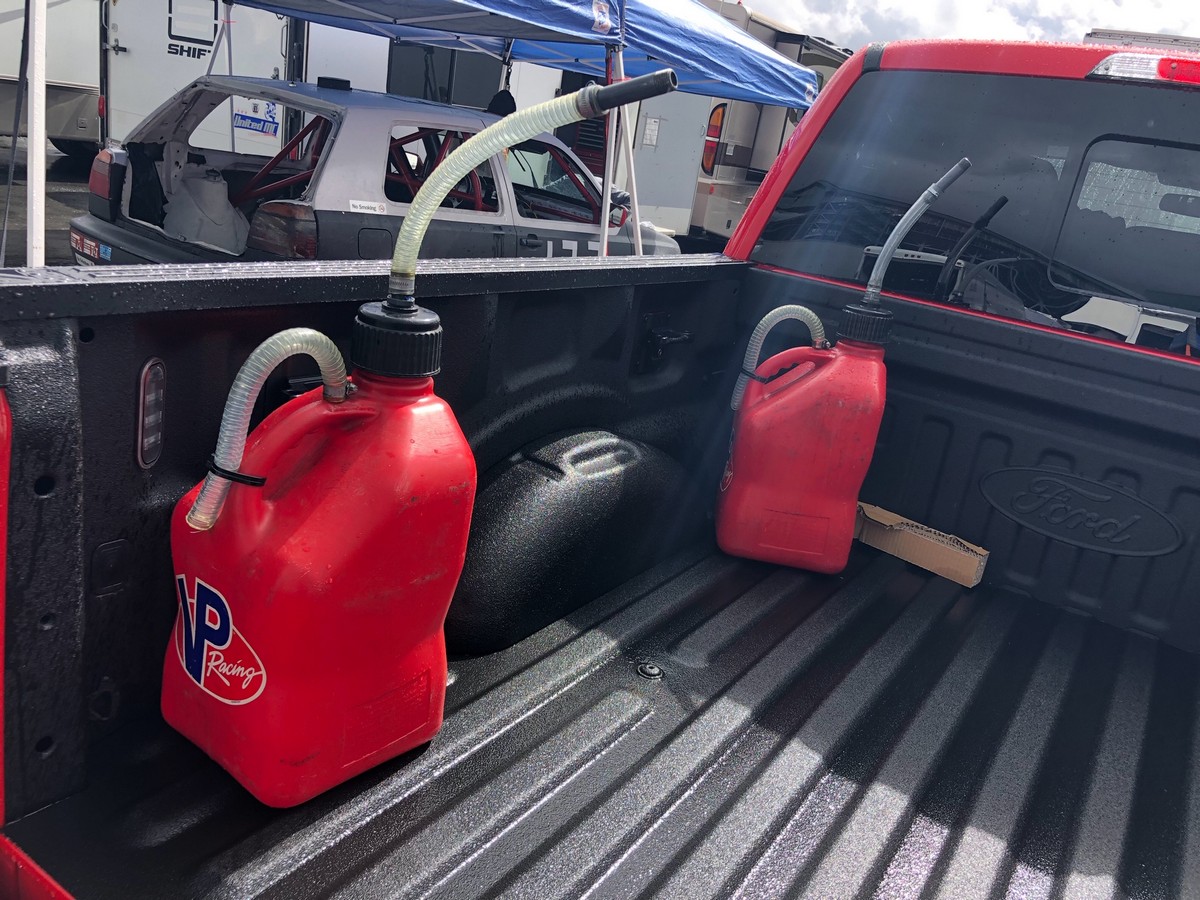- 3.0-liter Power Stroke turbodiesel V6
- Towing rating of 10,700 pounds
- Roomy 5-passenger SuperCrew cab
- 25 MPG highway and 20 MPG city (22 MPG combined)
“I’m looking for a fuel-efficient vehicle that can haul four adults comfortably while towing 9,000 pounds more than 1,000 miles in the pouring rain.” My e-mail request was unusually specific, yet not particularly extraordinary for a racing team heading out to compete in a 24 Hours of Lemons event – the famed $500 race car competition – in Sonoma, California.
Without being provided any other details other than that opening sentence, Ford answered my request almost immediately. Within 36 hours, the domestic automaker had delivered a 2019 F-150 4X4 SuperCrew, in arrest-me-now “Race Red,” fitted with its new Power Stroke diesel engine. A glance at the specification sheet revealed that the big 4-door checked-off all the boxes. However, the upcoming long drive up the state of California would be the real-world challenge.
Rugged aluminum construction and an efficient diesel V6
Ford disrupted the automotive industry when it announced at the 2013 Detroit Auto Show that its all-new, 13th-generation F-150 would utilize an aluminum-intensive design. The change would save upwards of 750 pounds (based on cab, powertrain and trim) over its steel-based predecessors, and it would give the automaker a much-needed advantage over its rivals. In a nutshell, the use of the lightweight alloy allowed Ford to downsize displacement, increase efficiency and lower curb weight to improve hauling and towing capacity.
The expensive gamble paid off – more than five years later, despite countless detractors and naysayers, Ford’s F-150 continues to significantly lead all its competitors in sales.
Our borrowed 2019 F-150 4X4 SuperCrew (configured with the 145-inch wheelbase and 5.5-foot bed) arrived with the optional 3.0-liter Power Stroke turbodiesel, which debuted for the 2018 model year. Boasting 250 horsepower at 3,250 rpm and 440 lb-ft of torque at 1,750 rpm, the engine is mated to Ford’s 10-speed automatic transmission. While the rear-wheel drive SuperCrew with that engine delivers a 30 MPG highway rating, the 4X4 model that we are driving is rated at a slightly lower 25 MPG highway, 20 MPG city (22 MPG combined). In any case, whether two- or four-wheel drive, those are impressive fuel efficiency numbers.
Lariat Series trim and select options improve the luxury quotient
The half-ton pickup truck segment is overburdened with options – there are literally thousands of add-ons and configurations. Like most automakers, Ford attempts to simplify the overwhelming with trim levels such as XL, XLT, Lariat, King Ranch, Platinum, and Limited. Our mid-grade Lariat boasted leather upholstery, auto-dimming mirrors, blind-spot and cross-traffic monitoring. Technology was addressed in the form of an 8.0-inch touch screen with Ford Sync Connect, which allows remote operation of many convenience features.
Added to the Lariat upgrades were Preferred Equipment Group 502A (Bang & Olufsen premium audio, heated steering wheel, heated 2nd-row seats, and more), a 3.55 electronic locking rear axle, trailer tow package (class IV trailer-hitch receiver, auxiliary transmission-oil cooler, 4-pin/7-pin wiring harness, and a beefier front anti-roll bar), 20-inch wheels, spray-in bedliner, and the technology package. As-tested, the price was $63,435 (including $1,395 destination). If I were configuring it, another wise option package is Preferred Equipment Group 701A, which adds adaptive cruise control, forward-collision warning, pedestrian detection, and the integrated tailgate step.
Hooking a trailer to the F-150
Our F-150 was tasked with towing a 24-foot Shadow enclosed car trailer from Los Angeles to the race in Sonoma, a city just north of San Francisco – the trip is about 450 miles each way. Fully loaded, the trailer tipped the scales at about 9,000 pounds (it was packed with a 1999 Porsche Boxster, 16 spare tires, a massive Snap-On tool chest, gasoline-powered generator, and about 1,000 pounds of miscellaneous things). A loaded race trailer is significantly heavier that most personal campers or lake boats, but the load is comfortably shy of the SuperCrew’s tow rating of 10,700 pounds.
2019 Car Reviews: First takes on new models
Hooking the trailer up was effortless, thanks to Ford’s high-res backup camera with Dynamic Hitch Assist. Pro Trailer Backup Assist, a system that complements the camera, helps those who are less practiced with backing up a trailer by allowing the driver to steer with a dashboard-mounted dial. After the trailer was on the hitch, we added a weight distributing system to further stabilize the combination — the truck sat nearly level. We double-checked all of the tire pressures and hit the road.
Towing up and down the Grapevine
Crossing the Los Angeles Basin, which sits at just above sea level, in slow stop-and-go traffic – speeds never exceeded 30 mph – was effortless. The turbodiesel pulled strongly off the line, and the 10-speed automatic shifted very smoothly. Overall, the greatest impediment was fellow motorists cutting us off as they jockeyed for a faster moving lane (we noted that our Ford’s mirrors didn’t extend to allow us to see down the sides of our trailer). Yet heading north on Interstate 5 we faced a much more daunting obstacle – the Grapevine.
With a road elevation of 4,144 feet and a reported grade of six percent for one 5-mile stretch, the Tejon Pass slows trucks (and many cars) to a crawl as they crest the summit. Our expectation was that the F-150, burdened with an additional 9,000 pounds on its hitch, would be relegated to running in the slow lane with hazard lights blinking. However, it was just the opposite. The transmission dropped a couple gears and the turbodiesel pulled effortlessly up the grade, easily holding the speed limit of 55 mph without showing any signs of stress. A full complement of auxiliary gauges allows the driver to keep tabs on temperatures and pressures (although we would prefer numerical readouts instead of bar graphs). While Ford doesn’t fit the V6 turbodiesel with an exhaust brake, the 10-speed downshifted automatically on the steep downgrades to help keep our speed in check. The truck’s brakes felt great, too.
Towing on I-5 and fuel economy observations
The F-150 4×4 SuperCrew tows very well on level ground, with confidence-inspiring handling. We utilized the vehicle’s cruise control for most of the trip (Interstate 5 is mostly straight as it heads up California’s Central Valley), and the Ford maintained the set speed regardless of the hilly inclines. Passing larger trucks, which required accelerating by another 10 mph for a moment or two, was also unproblematic each time we found a break in traffic – but again, we missed those wide towing mirrors. Assuming the trailer is properly balanced, pulling a 9,000-pound load in the Ford isn’t a challenge.
Check out the new and redesigned cars of 2019
Aside from the abundant torque, most buyers choose diesel over gasoline for the fuel economy. We noted an average of about 12 MPG while towing our heavy (and anything-but-aerodynamic) trailer – that’s about the same as towing with Ford’s combustion V8, noted one of our passengers. Yet without the trailer we saw an average of about 20 MPG with a mix of around town and running errands – that’s notably better than a gasoline engine. And, on our Southern California commute with no load whatsoever, we noted 27.1 MPG over a 90-mile stretch – those are very strong numbers.
Pricing and availability
The aluminum-bodied 2019 Ford F-150 XL starts at $28,155, equipped with a naturally aspirated 3.3-liter gasoline-fed V6. Our well-optional 2019 F-150 4X4 SuperCrew Lariat, with the 3.0-liter turbodiesel, is priced from $53,080 — it is available in showrooms today.
Ready to buy a Ford F-150? Get a free dealer price quote, or check dealer inventory near you.
